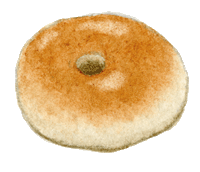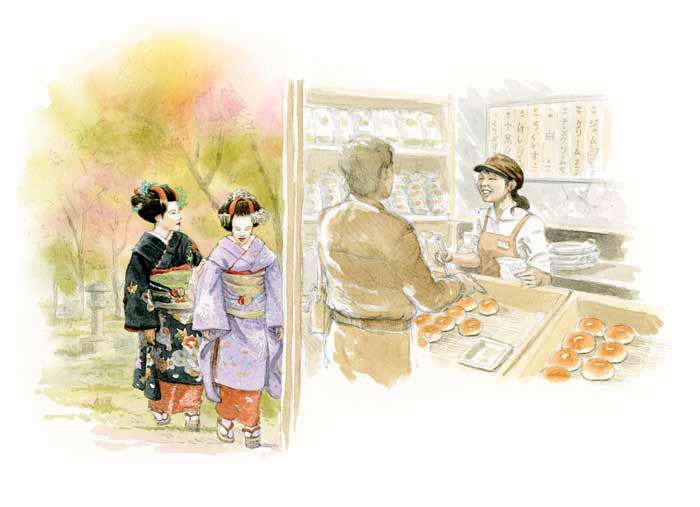Anpan

Form: Round, stuffed bun
Country of origin: Japan
What distinguishes it from other methods of bread making: Very similar to Viennoiserie, filled with red bean paste
Category of bread: (9) In the category of stuffed or filled buns, it is very similar to the Chinese baozi and the Latin American empanada
Particularity: Invented by an unemployed Samurai with time on his hands
Ingredients: Wheat flour; baker’s yeast; milk; sugar; salt; eggs; butter; red bean paste

Japan
The tradition of bread in Japan dates from the arrival of the Portuguese in the 16th century. Since the Portuguese call bread “páõ”, the Japanese adopted the word pan for all products made using the techniques of bread making. Undoubtedly, the sweetness and softness of Japanese doughs would justify putting most of these products coming from Japanese bread making right alongside Viennoiseries, or even pastries.
But the manner in which the Japanese eat korokepan (a sort of fritter stuffed with mashed potatoes) or anpan (filled with red bean paste) forces us to revise our categories a bit. They consist of little savory/sweet “sandwiches” that are eaten throughout the day by an extremely mobile population. For this reason, they fall into the category of “flash” food.
During the Meiji period from the end of the 1868 to 1912, Japan gradually opened up to the rest of the world. Ancestral culture became more malleable. Old institutions grew modern or non-existent. Yasubei Kimura lost his Army job with the fall of the Empire and the dissolution of samurai as a social class. In Tokyo, he opened a bread bakery, where he invented and sold anpans, similar to small brioches filled with anko, a red bean (azuki) paste. They almost immediately became a huge success, to the point that the face of Anpanman, the hero of one of the most popular cartoons in Japan, is shaped like an anpan. You can’t help thinking of anpans when you look at his cute, round face.

